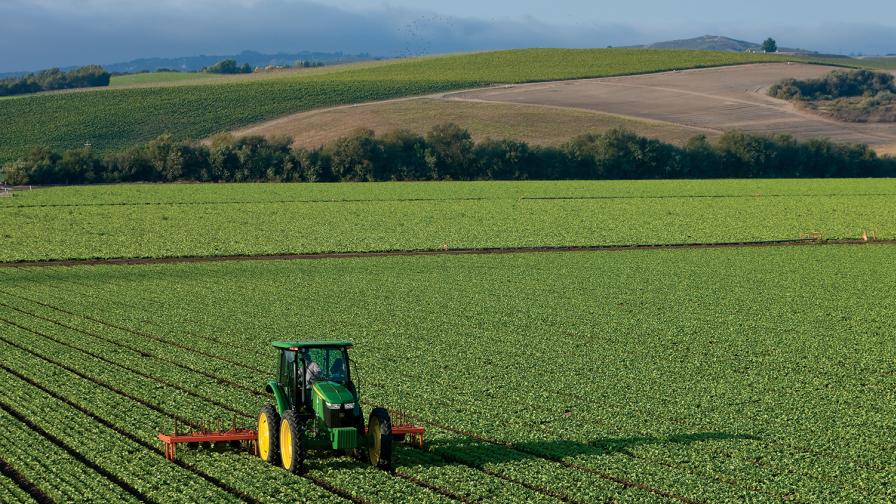4 Ways to Get More Value Out of Agriculture Equipment and Technology

From retrofitting existing equipment to routine maintenance, there are several ways growers and their advisors can maximize use of their ag equipment and technology.
Uncertain. Challenging. Or the one we continue to hear the most, unprecedented.
Even as companies are trying to show empathy with all the chaos COVID-19 has caused, these buzzwords have started to fall on deaf ears as we are inundated with corporate placations on struggle and fear. Although we may be tired of hearing them, the root of the words have truth: economically, things are tricky right now.
While farms are considered essential businesses and haven’t been shut down during the pandemic, to say growers are operating under “a business as usual” philosophy couldn’t be further from the truth, especially when it comes to equipment and financial management strategies.
Investing in the Existing
Growers’ equipment that was slated for a sale or trade-in at the local dealership may now have to remain fixtures in the fleet for another year, or two, or even more. New technology solutions they hoped to add this year may have to be put off for the time being.
But this isn’t a bad thing. Buying new machines and technology are not the only ways we can advise growers to invest in their business and remain profitable.
It’s always good advice to help growers get the most out of what they have but in these uncertain times (there, I had to say it), this advice becomes crucial. How can we help keep those older pieces from deflating in value faster than necessary? How do we advise keeping those used items valuable for the operation instead of feeling old and slow?
Looking ahead to this winter and with a little forethought, we can make the most out of the tagalong equipment and technology that may be around for another year or two – or more. Agronomic and technological tools are often thought of as too expensive or inaccessible, but there are many ways to upgrade equipment without buying brand now.
With the economic road ahead still unclear, here are four ways growers can invest in their existing equipment and technology.
1. Utilize the Under- (or not at all) Utilized
A seasoned piece of equipment may have new value by properly utilizing its features fully, particularly when it comes to technology. Too often, growers fear technology, seeing it as something unknown they have to learn. However, in many cases that “new” technology isn’t necessarily that new, it’s been there all along, and fully-utilizing it may mean increasing productivity, and reducing cost and time spent.
Story from the Field
I was recently calling on hundreds of growers that needed to accept terms and conditions on agronomic software through our equipment partner, John Deere. I learned, not only were many of them not using the software, they were not even aware of it and what it was capable of doing for their farm management. More importantly, they did not know how much value they were leaving on the table by not using the technology and John Deere Operations Center, an account which they already had access. In fact, a couple of them thought I was trying to sell them the program, not simply encourage use of a software they already had.
As a follow up, one grower asked me to come out and show him how to use the Operations Center. As I was going through the different tools, he was engaged in the opportunity and asked if needed to upgrade from his old display and GPS equipment to utilize the software.
The answer? No upgrades were needed! What was even better, the software was 100% free.
He will now be saving money with map creation next spring – a task which he had paid for and relied on from his seed dealer – as well as saving time with his sprayer record-keeping – which he could have been utilizing with his rate controller – among other things.
Total extra cost to this grower? Zero dollars.
Added benefit of fully utilizing technology already purchased? Priceless.
2. Look for Upgrade Options
New features and technology are among the most attractive reasoning for buying new equipment, to stay ahead of the curve and remain competitive. When new machine purchases just are not feasible, it is good to know that most new opportunities from equipment manufacturers can be retrofitted back to previous year’s equipment. Instead of buying that new piece of equipment, growers may be able to give the reasonably newer pieces of equipment a quick upgrade.
Story from the Field
Earlier this spring, a brand-new John Deere R4033 sprayer sat outside a grower’s shop. We excitedly looked around the straight-out-of-the-box (quite literally) sprayer that he had received to demo and was going to use the next day.
As we did our pre-start walkaround, we went over the agronomy and business highlights of some of the features – but I could tell he was uncomfortable. When he had signed up for the demo, he had been eager and optimistic about adding the new sprayer to his fleet, particularly because he was interested in its Deere ExactApply system.
Now he had arrived at demo day and was becoming acutely aware that a new sprayer wasn’t likely to happen in the next year or two. But he still had a fundamental need for the ExactApply for production success.
When he admitted this, I explained that ExactApply could be retrofitted onto any R-Series 2014 or newer. Rather than break the bank buying new, he might be able to find a used sprayer on the market and retrofit it with ExactApply.
This is a valuable lesson for growers and trusted advisors. For us advisors especially, it might be worth building a retrofitting plan for a grower, one that focuses on utilizing value-added or newer features on existing equipment as a way to keep it functional and high-performing for a few more years.
This can also be a good strategy for increasing the trade-in value of the equipment down the road, even during some critical years of depreciation if a grower can’t afford to trade in during that window of opportunity. It certainly cannot stop depreciation, but it might make it manageable until the grower can afford to update keystone pieces of equipment.
3. Don’t Allow Wear Out to Wear Down
While it may not be this year or even next, if a grower plans to trade in a tractor, the best advice to give right now is to maintain and care for that machine at 100%.
Story from the Field
“I felt like I had to take my shoes off before getting into the cab!” my co-worker quietly exclaimed as he got out of a customer’s tractor. I laughed because I expected nothing less from this grower and anything he owned. Even his riding lawnmower had a gleaming finish.
The tractor was a 2010 Deere 8285R but you would never guess it’s a decade old by looking at it. One could assume it was fresh from the factory in Moline, IL. The interior was pristine, the oil ran clear, and the grower had documented – down to the last filter change – what work had been done in his shop.
Simply put, well-documented and systematic maintenance, along with meticulous cleaning and upkeep, are the simplest yet most underutilized values that can be put into a tractor. Some growers don’t want to bring in their equipment for annual inspections with their dealer partner but all should be handling their own maintenance – then recording the work that has been done.
Not only is it a solid investment in extending the life of a machine, the proof of routine maintenance and overall care is evaluated on a trade-in. It is hard to replace a first impression so taking the time to care for the machine and keep it in good condition can go a long way in adding value. Plus, there’s the simple value of working in a cab that doesn’t have an anxiety-building amount of dirt, garbage, and clutter. As my mom used to say, mud is incidental, grime takes time.
While it may not be this year or next year, if the grower is planning to trade in that tractor, a strategy of care and cleaning establishes him or her to get the best value when that time comes.
4. Don’t Let the Little Things Get Away
Speaking of investing in today’s equipment for tomorrow’s trade-in, the added value growers can put into their machines goes beyond cleaning and maintenance, to also include more significant upgrades and repairs.
Story from the Field
As an example, consider precision equipment firmware updates. One of my customers is the proud owner of a 12-year-old, Deere 7R Series that still had a 2600 display and a StarFire iTC geolocation system. She asked my coworker and me to look at it for an appraisal and, as we jumped in, learned it was the fastest-booting 2600 we’d seen in years. It took only seconds to load and was ready to work even before we were.
The simple reason: the grower had been updating it, like clockwork. Every time there was a new update, she was downloading her data into Operations Center and deleting it off the display as soon she was done with it. A simple but effective practice is making sure updates are done and the data in managed.
Someone who had not been so diligent may have needed a new system, one that would cost thousands of dollars. In this case, the grower was able to keep the system and upgrade out of the iTC (which was going to be non-functional in a few months) for less than half the cost.
The concept isn’t just in precision technology that needs occasional fixes. How many times has something non-vital broken off on something you own and you just shrug your shoulders? I am as guilty as anyone; almost everything I own has a part broken off that I just never get around to fixing. However, for growers, those little repairs can make an item feel managed and increase the experience of sitting in that cab an extra year or two, not to mention increase trade-in the value.
Many times, especially on ground-engaging equipment like tillage equipment or planters, it is advantageous to do repairs before trading it in. An example: Growers should consider replacing disk blades on a planter. While it may cost a few thousand dollars, it will cost the dealership taking the trade-in much more, even double what it would cost the grower. The costs, such as paying for the parts and the labor from certified technicians on staff will be reflected back on the grower in the trade-in value.
It doesn’t matter if a grower is holding onto a piece of equipment just to get through a hard time or pursuing the opportunity to milk it for every last bit of value before trading in. Investing in a machine or technology now, in any of these four ways, will pay off now and down the road.






